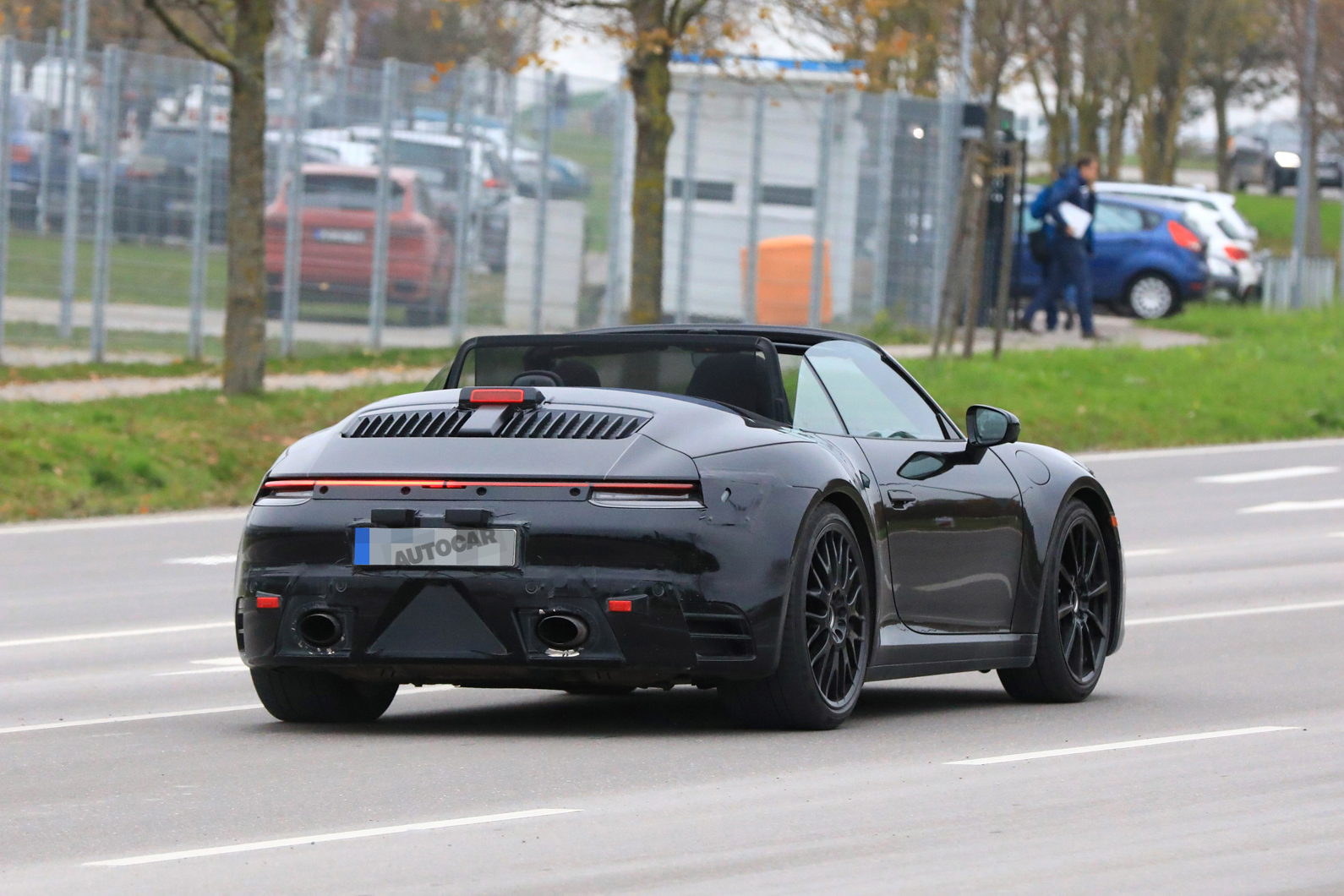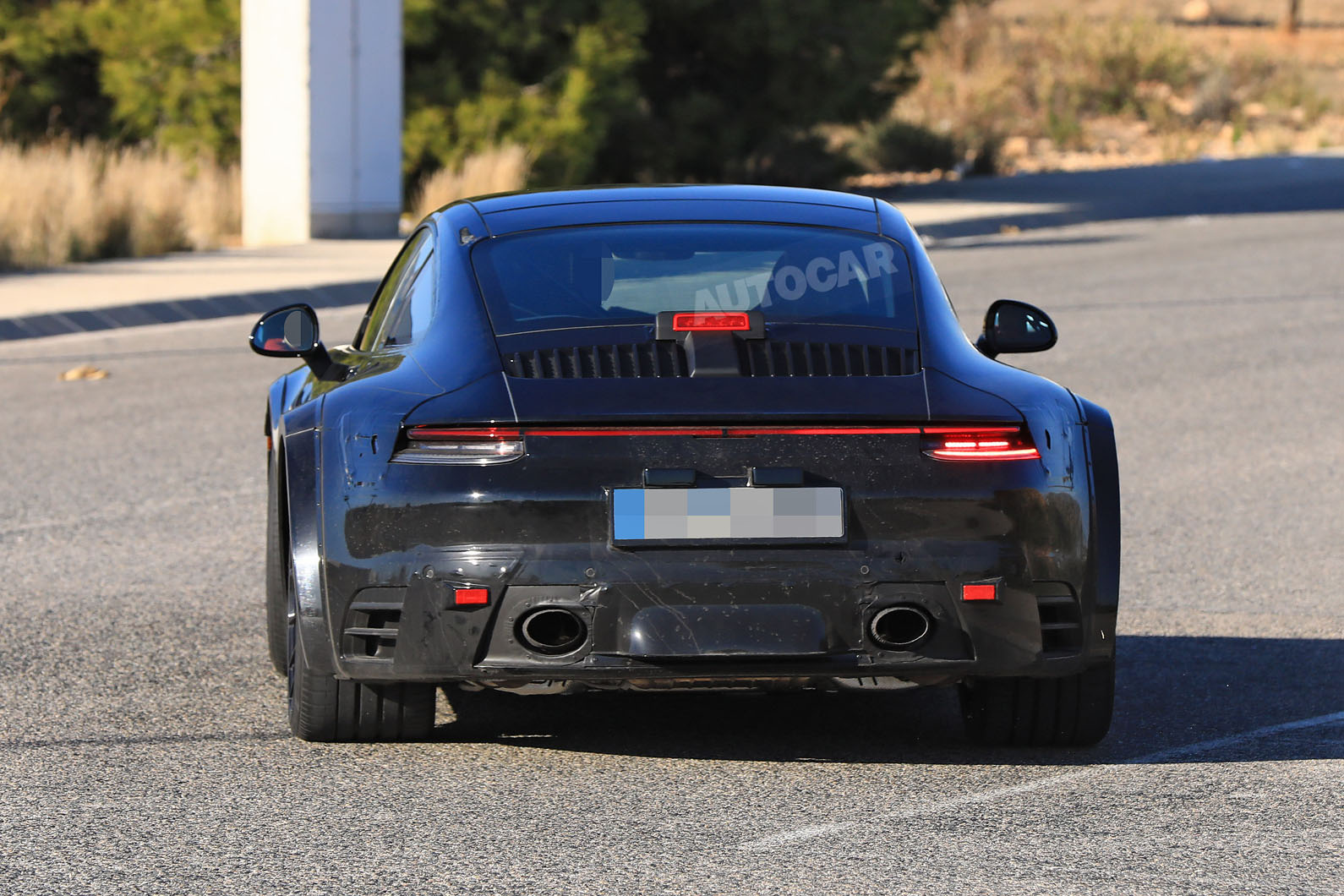The 2019 Porsche 911 will receive a more muscular look featuring a raised engine cover that takes influence from the iconic design of Speedster models from yesteryear.
Recently spotted testing in Cabriolet form near Porsche's Stuttgart headquarters, the next 911 has been given a more haunched back that resembles that of the 997 Speedster of 2011, which itself took influence from the original 356 Speedster from 1954.
An explanation for this new rear section could come from the additional space requried for a hybrid powertrain. But although the 992 generation 911 will be the first to be offered with hybrid technology, Autocar understands this technical change will have no noticeable impact on the car's exterior design. The raised rear is therefore a design feature, rather than technical requirement.
Engines and power outputs
The future 911 range, including the GT3, will exclusively use turbocharged six-cylinder engines, marking the end of naturally aspirated units for the line-up.
The GT3 will deliver more than 500bhp, while the standard models are set to get an extra 10-15bhp over today's Carrera and Carrera S. The current Carrera and Carrera S deliver 364bhp and 414bhp respectively, so the 992-generation 911 will produce 375bhp to 429bhp.

The hybrid 911 model will be introduced to the range in 2020. It will run the flat six with an electric motor, providing limited all-electric and performance-boosting functions.
The electrified powertrain has provided engineers with a packaging challenge, but product line director Erhard Mössle, now retired, previously told Autocar that "CO2 regulations in 2020" have spurred on the hybrid model's development.
The range will be headed by a 630bhp Turbo S model, powered by a ramped up version of the current car's 3.8-litre flat six to make it a genuine threat to the Ferrari 488 GTB. Porsche engineers have decided against including hybrid technology on the variant in a bid to save weight.
The future flagship series model will borrow engine hardware from the GT2 RS to ensure that its output jumps by 50bhp compared with today's Turbo S - edging it to within 30bhp of the 488 GTB.
The regular Turbo model that sits beneath the S is predicted to have 592bhp, which is 61bhp more than today's 991 version. Both the Turbo and Turbo S will be capable of more than 200mph.
Performance will, therefore, be scintillating, with the 2.9sec 0-62mph time of the current Turbo S beaten and the Turbo ducking beneath the 3.0sec mark for the first time. Of the Porsche cars in production after the 992's launch, only the electric Mission E will be quicker off the line - although it won't join the family until 2020.

Evolved chassis
The 992 911, which is the eighth generation of the sports car, will be built around an evolved MMB structure with a wider footprint than the current 991. The photographed test car above (spotted last year) wore wheel arch extensions - evidence of a wider track that will give the 992 improved high-speed stability and better space for rear passengers. The car's length will remain unchanged.
Modular design will enable the structure's use for next-generation versions of the Boxster and Cayman, while it could also influence the design and engineering of future Audi R8 and Lamborghini Huracán models. The updated structure will make more extensive use of high-strength steel and aluminium in order to cut weight.
Visible on the photographed cars is a full-width retractable rear wing. This will come as part of several active aerodynamic parts tasked with enhancing stability with downforce when additional grip is required. An active front spoiler is also a possibility, although this hasn't been seen on test cars so far
Interior and dashboard
The latest Cayenne and Panamera offer the biggest clues as to what the 992 911's dashboard design will be like. Spotted development cars have featured a central rev counter that's flanked by two digital screens, located in a cluster that curves around the centre console touchscreen.
The technology mimics the wraparound design of Volkswagen Group stablemate Audi and its Virtual Cockpit, but keeps a more traditional layout with revs the main focus.
Like its forebears, the 992 911 will will also be produced in Targa form, although this isn't expected to arrive until later.
Sam Sheehan and Greg Kable
Read more:
We've driven the 2017 Porsche 911 Carrera 4 GTS PDK - check out our review here
Ruf CTR - the 700bhp sports car inspired by the Porsche 911